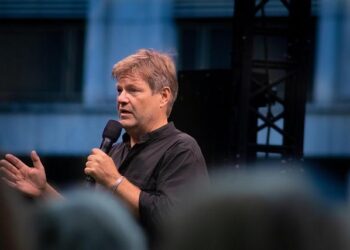Swedish media did not hold back in their assessment of Isak and Gyokeres following Sweden’s disappointing performance against Kosovo. After a match that fell well below expectations, analysts and journalists alike made clear their frustrations and critiques, highlighting key moments and decisions that contributed to the team’s lackluster display. This article delves into the sharp commentary from the press, reflecting on the players’ performances and what it means for Sweden’s campaign moving forward.
Swedish Media Criticize Isak and Gyokeres for Lackluster Display Against Kosovo
Swedish media outlets did not hold back in their assessment of Alexander Isak and Viktor Gy√∂keres following Sweden’s underwhelming performance against Kosovo. Headlines and opinion pieces across major newspapers emphasized the duo’s failure to influence the game, describing their attacking play as disjointed and lacking urgency. Critics pointed out that despite their reputation, both forwards struggled to find space and create meaningful opportunities throughout the 90 minutes, leaving the Swedish attack blunt and predictable.
Key points highlighted by analysts included:
- Poor off-the-ball movement that allowed Kosovo’s defense to stay well-organized.
- Missed chances that could have changed the game’s momentum much earlier.
- Limited link-up play with midfielders resulting in few threatening combinations.
| Player | Shots on Target | Pass Completion | Key Chances Created |
|---|---|---|---|
| Alexander Isak | 1 | 78% | 1 |
| Viktor Gyökeres | 0 | 74% | 0 |
Analyzing Tactical Missteps and Player Performances in Sweden’s Struggles
Sweden’s tactical approach in the Kosovo match revealed significant flaws that prevented the team from establishing control in midfield. The lack of cohesion between the defensive line and the forwards led to fragmented possession and missed opportunities. Key players, notably Alexander Isak and Viktor Gy√∂keres, struggled to find space or create meaningful chances, often isolated by the opposition’s organized defensive blocks. Critics argue that the decision to deploy a rigid 4-3-3 formation backfired, as the players seemed unable to adapt when the Kosovo side pressed aggressively, leaving Sweden vulnerable to quick counterattacks.
Evaluations of individual performances highlighted a mixture of underperformance and tactical misreadings. Isak was faulted for his low involvement in build-up plays and limited movement off the ball, which stifled the team’s attacking momentum. In contrast, Gy√∂keres showed flashes of promise but lacked the composure needed in crucial moments. Below is a concise breakdown of key player performances:
| Player | Pass Accuracy | Shots on Target | Key Contributions |
|---|---|---|---|
| Alexander Isak | 72% | 1 | Minimal link-up play |
| Viktor Gyökeres | 68% | 2 | Inconsistent finishing |
| Midfield Core | 75% | 0 | Poor ball retention |
- Stagnant offensive movement limited creative options.
- Defensive vulnerabilities exploited by Kosovo’s quick transitions.
- Coaching staff urged to rethink formation strategies before upcoming fixtures.
Recommendations for Isak and Gyokeres to Regain Form Before Upcoming Fixtures
To help Alexander Isak and Jo√ęl Gy√∂keres bounce back from their underwhelming display against Kosovo, Swedish coaches and analysts suggest a combination of tactical recalibration and focused individual training. Emphasizing enhanced positional awareness and sharper decision-making in the attacking third could reignite their goal-scoring instincts. Both forwards should be encouraged to engage more in build-up play to create space and link better with midfielders, rather than waiting for chances. Addressing these issues through video analysis sessions paired with tailored drills may restore their confidence and rhythm before the national team’s next fixtures.
Beyond on-field adjustments, experts advocate for psychological support to tackle the pressure mounting on the duo from media scrutiny and fans alike. This includes:
- One-on-one mentoring with sports psychologists to rebuild mental resilience.
- Controlled playing minutes in upcoming club matches to manage physical load while regaining competitive edge.
- Team-building exercises designed to boost camaraderie and communication within the squad.
Such a comprehensive approach, combining physical, tactical, and mental elements, aims to enhance their overall performance and prevent a prolonged dip in form. Coaches have also proposed a review of their shot selection statistics, illustrated in the table below:
| Player | Shots per Game | Shots on Target % | Expected Goals (xG) |
|---|---|---|---|
| Alexander Isak | 3.5 | 42% | 0.40 |
| Jo√ęl Gy√∂keres | 2.8 | 37% | 0.28 |
The Conclusion
As critics in the Swedish media continue to voice their disappointment following Kosovo’s lackluster display, the spotlight remains firmly on Isak and Gyokeres to respond and uplift their team’s fortunes. With expectations high and scrutiny intense, both players will need to demonstrate resilience and renewed form in upcoming fixtures. The evolving narrative underscores the challenges faced by the squad, as well as the enduring pressure on key figures to deliver on the international stage.
















